The Places
Dar es Salaam
Our trip began by flying into the former capital of Tanzania, Dar es Salaam. These are photos of the downtown area of Dar (note the prominence of the mosque in the first picture).
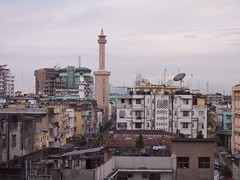
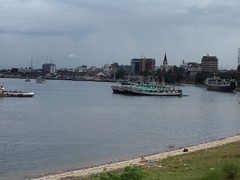
Dar is a very large city, and the area that is considered Dar extends far out beyond the center city’s large buildings and into suburban areas that are more akin to villages than to any large urban area. Thus, this is still Dar es Salaam…
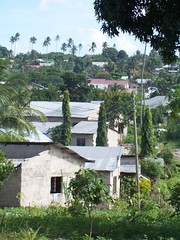
…This is the area where we stayed for our first night (called Tabata in the Kisukuru "suburb" of Dar), and this picture doesn’t do justice to the true face of the area: homes with no running water (even in some very nice homes, at that), sewage in the streams, rutted dirt roads, etc. However, the area was also full of beauty and activity: the sound of a group of women singing while going about the morning’s work, the wind blowing through the palm trees, children laughing and playing games...
We were given a walking tour of this area by one of our hosts, Jackie, and it was a great introduction to Africa: small one-room schools, small little businesses in little shacks, cattle wandering, while all the while you could see bizarre influences of the West. Allow me to go on a related tangent for a moment: all across the country, you could see the "modern" (and I use that word loosely, as it implies that anything that's a counterpoint is backward) mingling with the more traditional ways of living. For example, a little wooden kiosk in small village in the middle of nowhere selling top-up cards for cell phones. Everyone has a cell phone, as the infrastructure for land-lines is unreliable. That was the thing that struck me the most about our visit: I was prepared for the poverty and wasn’t shocked by anything I saw. I was prepared for the influence of the West. But it was the strange and incongruous synthesis of the two that struck me as really odd. But I digress…
Bagamoyo
While in Dar es Salaam, Katie and I took a day trip up to the historical town of Bagamoyo. This town houses the Kaole Ruins and was the HQ of both Arab slave traders and Catholic missionaries working to end that very same slave trade. After a dalla-dalla (bus) ride up the coast, we were given a tour by a local woman named Mariam who (we’re sure) attempted too slightly rip us off but Katie called her on it and she ultimately gave us a decent tour. The city was a pretty small, run-down little shore town, but nonetheless teeming with beauty.
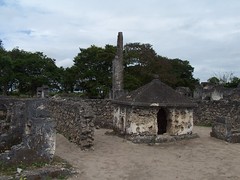
Kaole Ruins, with the remnants of one of the oldest mosques in East Africa. All of these structures are built from coral.
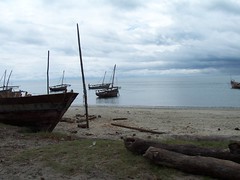
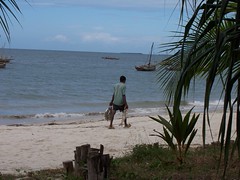
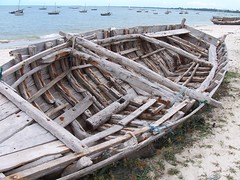
The Mororgoro region, on the Road to Dodoma…
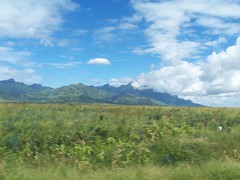
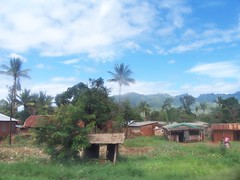
Dodoma
Dodoma is an old town but the new capital of Tanzania. It is a rather small city located in the semi-arid central portion of the country, an area that was described to us as the “ugliest part of Tanzania,” though I found it quite beautiful. (OK, the whole country was beautiful, but I really did think Dodoma was pretty, as I have always had a penchant for deserts). The area, along with much of East Africa, is experiencing a bad drought, and everywhere you looked, you could see dying fields of corn.
While in Dodoma, we were guests of the Chilongani family on the campus of the Msalato Bible College. In reference to the drought, the school itself has been sending food home to the families of its students to ensure that these people have something to eat. The things I most wish I had photos to show are the things of which I chose not to take pictures. Dodoma is not a tourist destination, and I felt inappropriate taking pictures of things such as the markets and such. So these photos are a poor representation of the life and activity of the city.
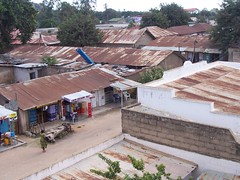
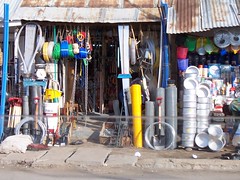
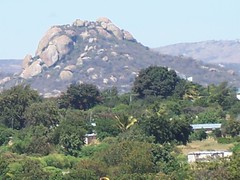
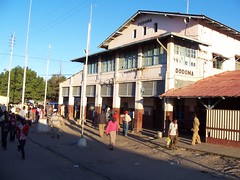
On the Train to Mwanza…
We rode the train from Dodoma to Mwanza largely on my insistence that it would be “an adventure.” And it was. Thirty hours on the train, hot days, freezing nights, dust, smoke, a sore throat, and meal after meal of rice. I’m glad we did it, though.
Below is a video I took from the window of our train car and I think it is a fair representation of what the rural areas of Tanzania (which is MOST ALL of Tanzania) looks like. The black cloud that float through the screen is the smoke from the train engine.
View from Train, Tanzania 6/15/06
30 hours on a train = Two exhausted travellers
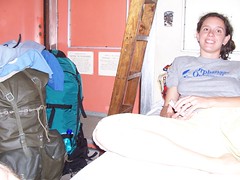
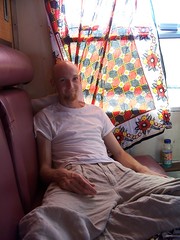
Mwanza and Nassa, Lake Victoria region
Late on the evening of the 15th we arrived in Mwanza, Tanzania’s second largest city. We stayed the night in a hotel and then headed out to where we were staying for most of the next week: a village called Nassa, which we thought was close to Mwanza, which in relative terms was closer than any other bigger cities but was in actuality well over an hours drive away.
Nassa is home to the Nassa Bible College, and our hosts, the Mashikus, teach there. It was not quite the week we were expecting (and I was sick from the dang train), but we enjoyed ourselves very much, getting to know the family better and visiting with students of the school. Nassa, by the way, is located on the banks of Lake Victoria and was, like everywhere else, beautiful.


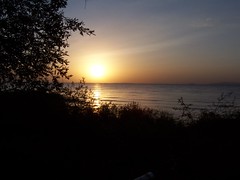
Sunset on Lake Victoria, 6/16, 2006.
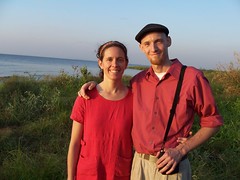
While in Mwanza for an afternoon, we visited Saa Nane Island, a pretty island with a depressing little zoo. We went with our new pal, John Sweya.
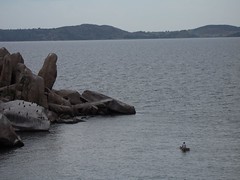
The Serengeti, on the Road to Nairobi, Kenya
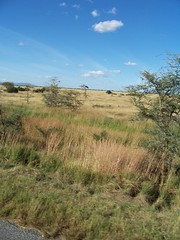
Nairobi, Kenya
Our final stop was Nairobi, the capital of Kenya and a HUGE city. Like Dar es Salaam (and any large urban area for that matter) the city encompasses vast extremes within its boundaries. The center city is huge, modern, and (aside from air pollution) fairly clean:
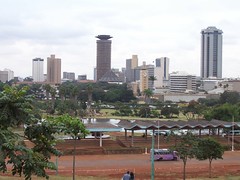
Having done a fair amount of reading on the poverty and housing shortages of the city, I was prepared for the sight of the slums. I was not prepared for how developed the city center would be. Even knowing that it was a very “Westernized” city, I was shocked, honestly. However, Nairobi is also home to Kibera, considered by many to be the world’s largest slum. Numbers are hard to pin down, but it is estimated that as many 800.000 people live in the slum.
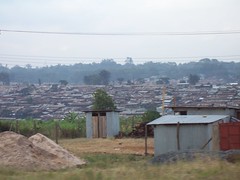
No streets, no running water, no sanitation. But this is where many people (and many with respectable jobs) live and PAY RENT. It was fascinating to see it- it’s not tucked away from sight, it’s right down in a area that is pretty nice and well-traveled. It’s just the reality of the city. There’s 2 million+ people and not enough physical housing/ affordable housing in Nairobi.
The Animals
We did see plenty of animals, from tiny lizards to baboons. Here is a sample of some of the critters, large and small, that we saw (primarily from Nairobi national park right outside the city).
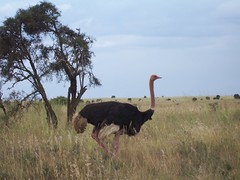
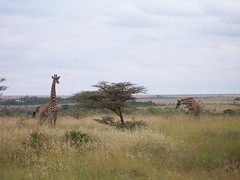
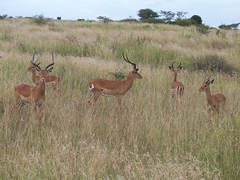
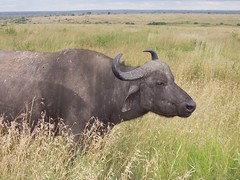
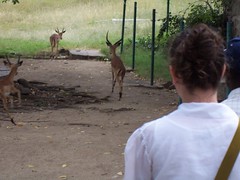
On Saa nane Island, in Mwanza.
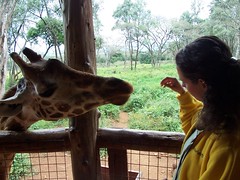
At the Langata Giraffe Center in Nairobi…
In Conclusion…
People have asked if our trip was what we hoped it would be, and the answer is yes and no. The trip was full of experiences that we were not expecting, some full of wonder and enjoyment, some slightly uncomfortable. But all of it was valuable to our understanding of what life in East Africa is like, at least for some of its residents. But undeniably, the trip was wonderful and worth the effort. We met many wonderful people and saw an untold number of wonderful things. Our host families were fabulous, and we encountered many many people along the way that offered us encouragement and, more importantly, an example to follow when striving to live a life, raise a family, make a difference in Africa.
So to end this “Best of Africa” feature, I will conclude with images of the most beautiful thing we saw in Tanzania and Kenya, and that would be the African people themselves. We were humbled by the kindness and generosity we encountered, and I’ll leave it at that, as no words can adequately describe such acts of friendship. So enjoy these images of the people of East Africa…
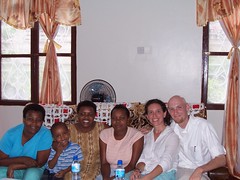
The Assenga Family, in Dar es Salaam: Rosemary, Kennedy, Jackie, Mary, with Katie and Chris.
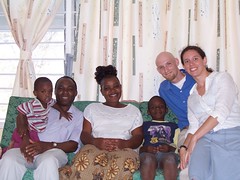
The Chilongani Family, Dodoma: John, Dickson, Penda, Imani, and Chris and Katie.

Fabian Maganda on the shore of Lake Victoria, Nassa, TZ.
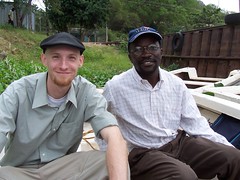
Chris and John Sweya, Mwanza, TZ.

Bukela “Little Thing / Kitu Kidogo” Sweya, Chris, Solomon, and Melky Mashiku, Nassa, TZ.
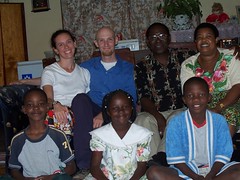
The Mashiku Family in Nassa, TZ: (back row) Katie and Chris, Dennis, Mary, (front row) Melky, Bukela Sweya. And Solomon. (Not pictured, Eunice, and Mary’s father who’s 100 years old!)
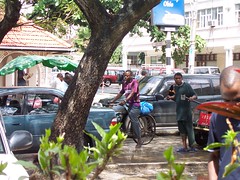
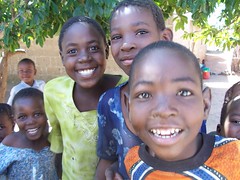
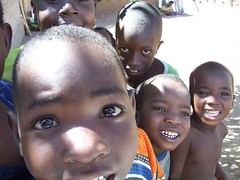
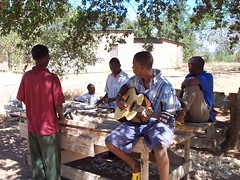
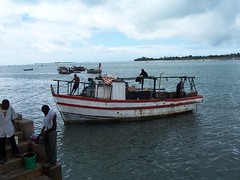
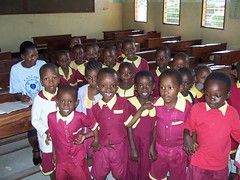
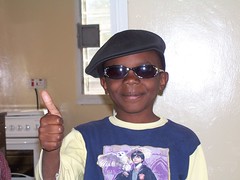
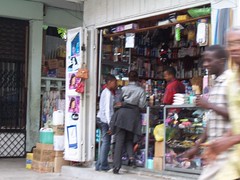
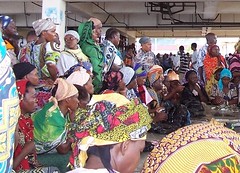
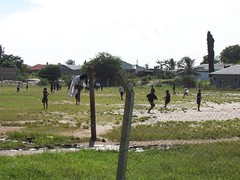
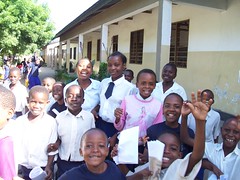
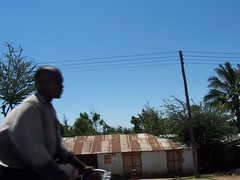
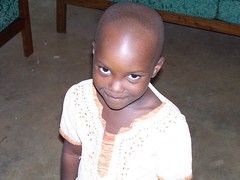
13 comments:
Unbelievably fabulous. I am so proud that you are who you are.
Neato McPeato.
Very nice. Have fun digesting the experience and sorting out your place in the continent's story.
Izzy,
heading to see Tsotsi in a few minutes
Loved seeing your pics! Glad y'all made it back and can't wait to hear the stories...
Great shots--thanks for sharing. I loved the composition of the boat @ Bagamoyo, and was tickled by the little guy with shades & the Harry Potter shirt giving a thumbs up. So glad you guys got to go--and I know you're looking forard to returning.
Absolutely amazing....... thanks
Super pictures, brought back memories of our trip. So glad you had the experience and hope your dreams of returning come true.
awesome post! i was absolutely blown away by the photos of the animals and heartwarmed by the photos of the friends you made there. thanks for sharing part of your experiences with us.
What an amazing journey you were able to experience! Very proud of both of you. Great pics! Thanks for sharing.
Baldman,
Wonderful images. I'm am impressed at the collection.
I wish to hear more about the trip.
Sincerely,
Dogwood
hey man, these are some awesome pics. im sure what you took away from this trip will change your life forever.
stranded traveler, tim
Interesting Blog. Well done.
Is Dickson still the principal of Msalato Bible College today? My wife and i plan to visit that pat of Africa next year.
God bless,
RC
This was a well documented trip. The photos are breath-taking. There is something about Africa that always amazes me. Despite the many hardship that we face we alway have a smile on our faces. The grace among us is unprecedented. Long live Africa
Alex Mbaka
http://www.thekenyanvoice.com
Post a Comment